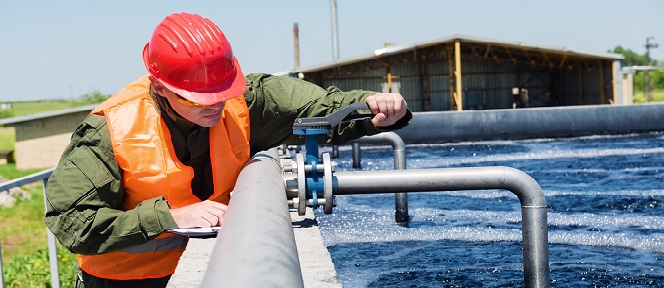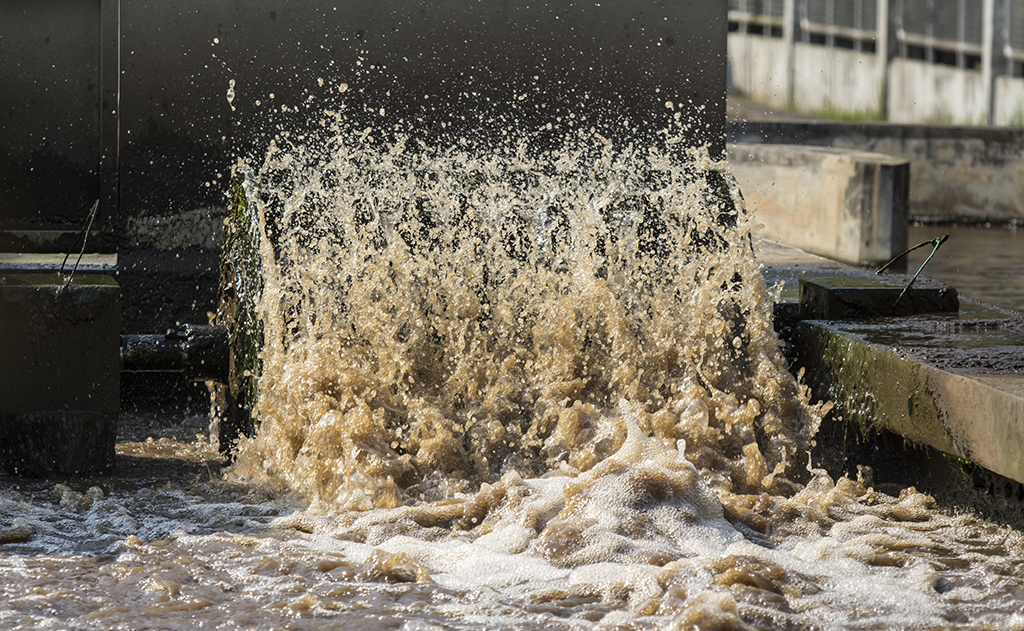In France, wastewater treatment is a regulated process. There are various ways of checking the quality of wastewater treatment systems. One of the tools used to ensure that they are working properly is the sanitation diagnostic.
Sanitation diagnostic is a certificate that must be carried out when selling a property that is not connected to the public sewerage system. Why is sanitation diagnostic compulsory? What must it contain? Which professional can carry it out, and how do you go about it?
What is a sanitation diagnostic?
Sanitation diagnostic is a compulsory property diagnostic when selling a house that is not connected to the mains sewage system. The purpose of the diagnostic is to check that individual wastewater treatment systems comply with current regulations. Whether it’s a septic tank, a mound disposal field or a micro wastewater treatment plant, this rapid diagnostic check will enable you to progressively improve the condition of your non-domestic wastewater treatment facilities, since any deficiencies will require you to bring them up to standard.
Since 1st January 2011, the sale of a property with a septic tank has had to be accompanied by a sanitation diagnostic report less than three years old, which is the responsibility of the vendor and must be given to future buyers before the sale is completed. Like all the other diagnostics, it informs the buyer about the state of the individual or collective sanitation facilities in the property.
Why is sanitation diagnostic compulsory?
Even today in France, almost 20% of the population is not connected to the public wastewater collection network. That’s 6 million potentially faulty or poorly maintained non-collective sanitation installations, which can present major health and environmental risks by discharging their wastewater directly into the environment. To improve the situation, the Water Act of 30 December 2006, supplemented by the “Grenelle II” Act of 12 July 2010, introduced a new diagnostic tool: the sanitation diagnostic. All residential properties that are not connected to the public wastewater collection network are required to undergo this diagnostic procedure.
A sanitation diagnostic is valid for three years. If no inspection is carried out, or if the validity period has expired, the vendor-owner must contact the non-collective sanitation public service (SPANC in French) to have the sanitation installation inspected.
A sanitation diagnostic is valid for three years. If no inspection is carried out, or if the validity period has expired, the vendor-owner must contact the non-collective sanitation public service (SPANC in French) to have the sanitation installation inspected.
Who can carry out a sanitation diagnostic?
Unlike other property diagnostics, sanitation diagnostics are not carried out by an independent diagnostician, but by your local authority. The SPANC (non-collective sanitation public service) is responsible for carrying out the sanitation diagnostic. Depending on the local authority, the visit may be free or chargeable. The non-collective sanitation public service (SPANC) was set up under the 1992 Water Act. It has been compulsory for all local authorities since the law of 1st January 1996.
After making an appointment, a SPANC expert will come and check the state of maintenance of your installation and the way in which you evacuate wastewater. This expert will then draw up a visit report based on the inspection of the private part of the network: the sanitation diagnostic. This official document will determine whether the installation is compliant. The SPANC report includes recommendations on the maintenance of the sanitation system, or optional work to be carried out. If the installation is found not to be compliant, the seller or buyer will have to carry out work. To have a sanitation diagnostic carried out, simply contact your nearest SPANC, or your local authority, which will put you in touch with an operator.
Most non-collective sanitation installations are defective and/or poorly maintained. By 2020, it is estimated that around 600,000 homes will be discharging wastewater directly into the environment, with harmful consequences for the environment, groundwater and watercourses.

What does a sanitation diagnostic involve, and what should it say?
When the SPANC diagnostician visits the property, he will carry out the inspection in the presence of the owner and, if the property is rented out, the occupant. The owner must provide all the documents in his possession: previous certificates of conformity, notices, title deeds, etc.
The sanitation diagnostic meets precise specifications, which may vary depending on the type of appliance and when it was installed.
It involves, among other things:
- Identifying and describing the devices making up the wastewater treatment system.
- Checking the apparent condition of the system.
- Assessing any risks to the health of occupants or harm to the environment.
- Check the materials, pipes and waterproofing of connections.
- Describe the flow of interior equipment.
- Identify any defects in maintenance and wear.
- Ensure that the system is correctly sized for the building and its use.
Once the checks have been completed, a visit report is issued to the owner, known as the “on-site sewerage system condition” certificate. It sets out the operator’s observations, along with recommendations to the owner regarding use, maintenance and any work recommended to improve the system. In the case of a sale, the condition certificate for the on-site sewage treatment system must be appended to the sales agreement along with the other mandatory diagnostics in the Technical Diagnostics File (DDT in French).
If there are any risks or faults in the sanitation system, an obligation to bring it into compliance may be issued. Please note: this work must be carried out no later than one year after the sale.
To find out more about sanitation diagnostics, consult the French legal texts:
- Directive cadre européenne sur l’eau n.2000-60 du 23 octobre 2000
- Loi n. 2001-398 du 9 mai 2001
- Ordonnance du 8 juin 2005
- Loi 2006-1772 du 30 décembre 2006 relative à l’eau et aux milieux aquatiques




